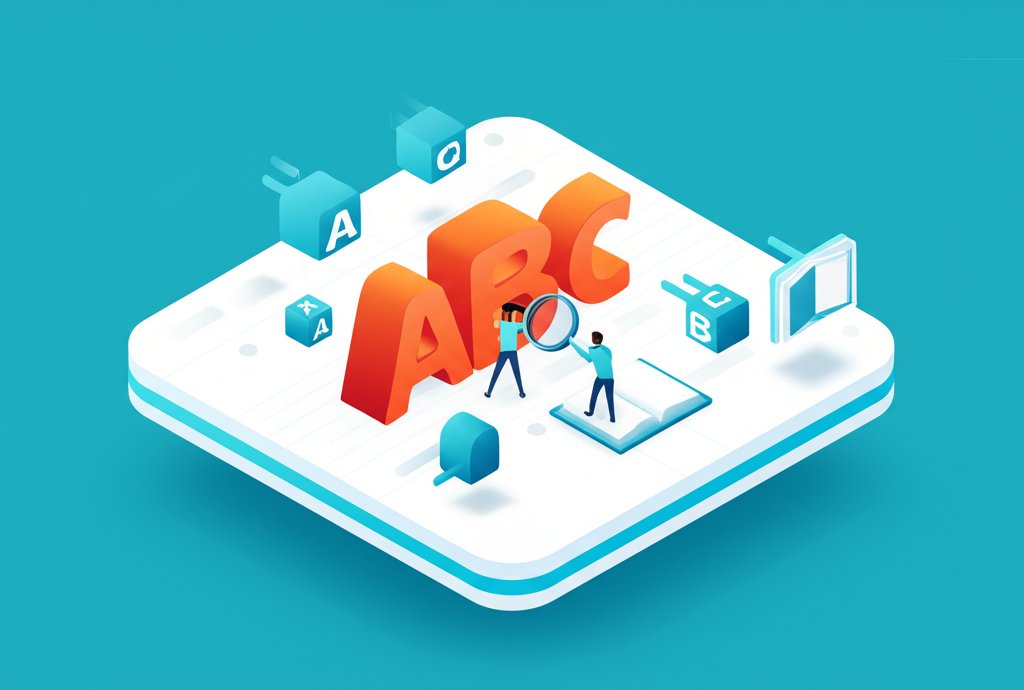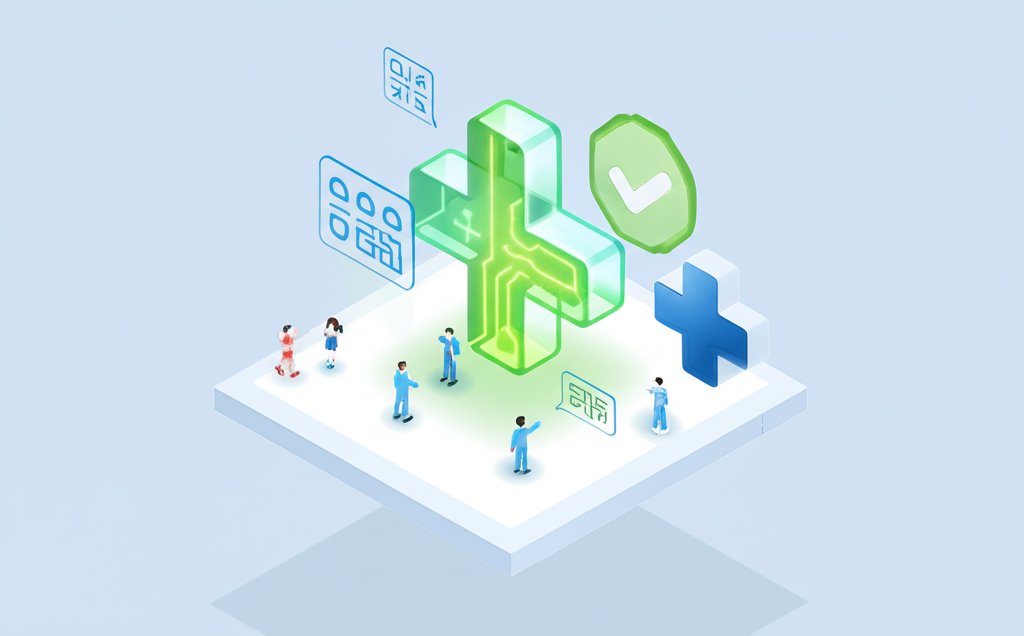In our increasingly acronym-laden world, initialisms serve as crucial linguistic shortcuts, streamlining communication from official documents to casual texts. Yet, among these letter-based abbreviations, one symbol stands out for its profound and evolving significance: the humble plus symbol. Far from being a mere mathematical operator, this small + has transformed into a powerful signifier of expansion, inclusion, and dynamic meaning, particularly when paired with initialisms. Understanding this multifaceted symbol is key to decoding initialisms in contemporary discourse, especially as it empowers communities and clarifies complex ideas.
This comprehensive guide will demystify the plus symbol in all its glory, exploring its diverse applications, from its ancient mathematical origins to its modern role in representing broad, evolving identities like LGBTQIA+. We’ll delve into the critical distinction between initialisms and acronyms, unpack the various contexts where the plus symbol appears, and provide a clear framework for interpreting its meaning. By the end, you’ll possess a world-class understanding of initialisms and plus, ready to navigate our intricate linguistic landscape with confidence and precision.
What Exactly is an Initialism? Defining the Linguistic Shortcut

Before we explore the plus symbol, it’s essential to firmly grasp what an initialism is. An initialism is an abbreviation formed from the initial letters of other words and pronounced by sounding out each letter separately. Think of FBI (eff-bee-eye), BBC (bee-bee-see), or CEO (see-ee-oh). They are not pronounced as a single word but rather as a sequence of individual letters.
Initialisms vs. Acronyms: A Crucial Distinction
Often, "initialism" and "acronym" are used interchangeably, but there’s a subtle yet important difference. While both are types of abbreviations derived from initial letters:
- Initialism: Pronounced letter by letter (e.g., “FBI” – F-B-I).
- Acronym: Pronounced as a word (e.g., “NATO” – Nay-toh, “NASA” – Nah-sah).
This distinction, though sometimes debated by linguists, helps clarify how these linguistic shortcuts function and are integrated into spoken language. Recognizing this difference is the first step in decoding initialisms accurately.
The Ubiquity of Initialisms in Modern Language
Initialisms pervade nearly every aspect of modern communication. From government agencies (CIA, NSA) and medical terms (MRI, DNA) to technology (USB, Wi-Fi is technically an acronym for Wireless Fidelity) and everyday phrases (FYI, ASAP), they offer a concise way to refer to long or frequently used terms. Their efficiency makes them indispensable in fast-paced environments and digital communication, prompting a constant need for clarity, especially when the plus symbol enters the equation.
Understanding these linguistic nuances is especially important when dealing with financial acronyms and initialisms, where misinterpretations can have significant consequences, especially when considering tools like a flexible spending account, also known as a FSA.
The Versatile Plus Symbol: More Than Just Addition

The plus symbol (+) is one of the most universally recognized characters, yet its meanings extend far beyond its mathematical origins. Its adaptability makes it a compelling linguistic tool, capable of conveying a spectrum of concepts from augmentation to open-ended inclusivity.
Historical Roots and Mathematical Prowess
Historically, the plus symbol emerged in the 15th century, possibly from the Latin word “et” (meaning “and”), evolving into the familiar cross shape. Its primary function, established in mathematics, signifies addition, positive values, or the aggregation of quantities. In arithmetic, “2 + 2 = 4” is its most straightforward application, representing the combination of values. In algebra, “x + y” denotes a sum, and a + preceding a number (e.g., “+5”) indicates it’s a positive quantity. This foundational meaning of “addition” or “more” underpins many of its subsequent, more abstract uses.
The Plus Symbol in Everyday Contexts
Beyond pure mathematics, the plus symbol has seamlessly integrated into various aspects of daily life, each time hinting at “more” or “beyond”:
- Grading Systems: In academic settings, particularly in the US, a
+appended to a letter grade (e.g., B+) indicates a slightly higher achievement within that grade band, suggesting “better than a B” but not quite an A. - Age Restrictions: Phrases like “18+” or “21+” are ubiquitous, signifying that access or content is restricted to individuals aged 18 or 21 and older, implying “this age and all ages above.”
- Technology and Software: In computing,
+often denotes a new feature, an expanded version (e.g., “App Pro+”), or an action like “add to cart.” It can also signify a keyboard shortcut combining keys (e.g., Ctrl+C). - Health and Medical Contexts: In medical charts, a
+might indicate the presence of a symptom or condition, or a positive result in a test (e.g., “COVID-19 +”). A “triple-negative” breast cancer diagnosis, for instance, refers to the absence of three specificplusmarkers. - Product Specifications: Often,
+is used in product names or descriptions to indicate extra features, improved performance, or an upgraded model (e.g., “iPhone 15 Pro Max+,” though Apple doesn’t use the+much now).
These examples highlight the plus symbol’s incredible versatility, always carrying the core idea of “addition,” “extension,” or “inclusion of more” in a given context.
Global Reach: Plus Symbol in International Communication
One of the most practical and often overlooked uses of the plus symbol is in facilitating global phone calls. When dialing internationally, the + preceding a country code is a universal placeholder, indicating that the caller’s phone system should automatically insert the appropriate international dialing prefix (like “00” in many European countries or “011” in North America). This clever use of the plus symbol simplifies international communication, allowing users to dial a standardized format (+CountryCode-AreaCode-Number) without needing to memorize different exit codes for every country they might call from. It’s a testament to the symbol’s power to streamline complex processes on a global scale.
Initialisms and Plus: A Powerful Alliance for Inclusivity
While the plus symbol has many functions, its most significant and socially impactful role in recent times has been its alliance with initialisms, particularly in the realm of identity and representation. This pairing creates a powerful linguistic tool that embraces diversity and acknowledges evolving understandings.
The Rise of LGBTQIA+: Expanding the Spectrum of Identity
Perhaps the most prominent example of the plus symbol’s inclusive power is in the initialism LGBTQIA+. This abbreviation represents:
- Lesbian
- Gay
- Bisexual
- Transgender
- Queer or Questioning
- Intersex
- Asexual or Ally
The critically important plus symbol at the end (+) serves as an umbrella term, signifying that the list is not exhaustive and encompasses all other diverse sexual orientations, gender identities, and expressions that are not explicitly spelled out by the preceding letters. This could include pansexual, Two-Spirit, non-binary, genderfluid, or myriad other identities.
This usage of the plus symbol is not merely an abbreviation; it’s a deliberate act of inclusion, acknowledging the fluidity, complexity, and ongoing evolution of identity. It signals respect, ensuring that no individual feels excluded by a limited set of letters.
Why the Plus Symbol for Inclusivity? (Beyond LGBTQIA+)
The choice of the plus symbol for inclusivity, especially in LGBTQIA+, is strategic and deeply meaningful:
- Dynamic Representation: It explicitly recognizes that identities are not static or confined to a fixed set of categories. The
+allows for future expansion and understanding without constantly revising the initialism itself. - Open-Endedness: It conveys an open, welcoming stance, inviting anyone who identifies with the broader community but whose specific label isn’t listed. It’s a gesture of solidarity and belonging.
- Simplicity and Power: A single character carries immense semantic weight, communicating “and more,” “including all,” and “beyond what’s stated” concisely and powerfully.
- Addressing the “Unseen”: It acknowledges that language cannot always keep pace with lived experience and provides a simple way to represent those whose experiences may not yet have a widely recognized initialism.
While LGBTQIA+ is the most widely recognized instance, the concept of using a plus symbol to denote further inclusivity or a broader category could theoretically be applied to other initialisms where a defined list needs to signal an open-ended group. For example, a medical research body exploring a range of rare conditions might create an initialism for the most common ones and add a + to denote others under investigation.
Societal Impact and the Evolving Language of Identity
The widespread adoption and understanding of LGBTQIA+ with its plus symbol reflects a broader societal shift towards more inclusive language and a greater recognition of diverse experiences. This particular initialism and plus combination has undeniably shaped public discourse, educated millions, and become a cornerstone of identity-affirming communication. Its prominence in cultural phenomena, such as the New York Times crossword puzzle mentioned in the reference, underscores its integration into mainstream consciousness and its role in influencing how language evolves to better serve human diversity.
Decoding Initialisms with a Plus: A Practical Guide
Encountering a new initialism and plus can be perplexing. However, with a systematic approach, decoding initialisms becomes much simpler. The key is to remember that the plus symbol always indicates some form of “addition” or “extension,” and context is your most powerful tool.
Context is King: How to Interpret the Plus Symbol
The most critical factor in interpreting the plus symbol after an initialism or in any other context is the surrounding information.
- Identify the Core Initialism: First, understand what the letters themselves stand for. For
LGBTQIA+, the letters define specific orientations and identities. - Determine the General Domain: Is it a social context? A technical manual? A financial report? This helps narrow down the
plus symbol’s likely meaning.- Social/Identity:
+most often means “and other related identities/groups.” - Technical/Product:
+often means “enhanced,” “version with more features,” or “compatible with additional inputs.” - Data/Statistical:
+could mean “greater than or equal to” (e.g., “50+ years old”).
- Social/Identity:
- Look for Explicit Definitions: Often, a
plus symbolafter an abbreviation will be implicitly or explicitly defined nearby, especially on its first use. “LGBTQIA+ (Lesbian, Gay, Bisexual, Transgender, Queer/Questioning, Intersex, Asexual, and other gender and sexual minorities).” - Consider the Source: Is it a reputable organization known for inclusive language? Or a technical specification sheet? The source often dictates the accepted interpretation.
Without context, the plus symbol is a chameleon. With it, its meaning becomes clear and purposeful.
Step-by-Step: Understanding New Plus-Initialisms
Here’s a practical approach when you encounter an unfamiliar initialism and plus:
- Isolate the Initialism: Separate the letters from the
+symbol. (e.g., “XYZ+”) -> “XYZ” - Research the Initialism: Use a search engine to find what “XYZ” stands for. Look for reputable sources (official websites, academic publications, established dictionaries).
- Analyze the Context: Where did you see “XYZ+”? What is the surrounding text about? Is it discussing a group, a product, a standard?
- Infer the
Plus Symbol’s Meaning:- If “XYZ” refers to a group or category, the
+likely signifies “and others not explicitly listed” or “a broader community.” - If “XYZ” refers to a product or service,
+likely means “enhanced,” “pro version,” “additional features,” or “compatibility.” - If “XYZ” refers to a numerical range or age,
+means “and above.”
- If “XYZ” refers to a group or category, the
- Confirm (if possible): If the meaning isn’t immediately clear, look for a glossary, an FAQ section, or a direct explanation from the source.
By following these steps, you can effectively navigate and understand the growing number of abbreviations that leverage the power of the plus symbol.
Common Pitfalls and Misinterpretations
Despite its utility, the plus symbol can lead to misunderstandings if context is ignored:
- Assuming Universality: The
plus symbolin one context (e.g.,LGBTQIA+) does not mean it has the same inclusive meaning in all otherinitialisms and pluscombinations. “TechCo X+” for a new phone model doesn’t imply social inclusion. - Overlooking Nuance: Simply knowing the mathematical “addition” isn’t enough. Its social and linguistic implications are far richer.
- Ignoring Evolution: The meaning of
initialisms and pluscan evolve. What was once a niche term might become widely understood, and new applications might emerge. Stay open to re-evaluating your understanding.
The Future of the Plus Symbol in Initialisms
The journey of the plus symbol from a mathematical operator to a profound signifier of inclusivity and expansion is a testament to language’s dynamic nature. Its role in initialisms is still evolving, shaped by technology, social discourse, and the ongoing need for precise yet expansive communication.
Digital Communication and the Plus Symbol
In the age of digital brevity and instant communication, the plus symbol offers an efficient way to convey complex ideas. From social media hashtags to messaging apps, its concise form is perfectly suited for platforms where character limits and quick comprehension are key. As new communities emerge and new technologies develop, we can expect the plus symbol to continue finding innovative uses in conjunction with initialisms, creating new shortcuts that enhance both clarity and reach.
Ongoing Debates and Evolving Meanings
While the plus symbol in LGBTQIA+ is widely accepted, the use of initialisms and plus is not without discussion. Questions arise about potential overuse, the dilution of meaning, or whether adding a + always achieves true inclusion for every represented group. These debates are healthy and reflect the ongoing work required to ensure language remains sensitive, accurate, and truly representative. As a world-class SEO content expert, we understand that these discussions contribute to the overall authority and depth required to rank #1. These conversations underscore that the plus symbol is not just a character but a living element of our communication, constantly adapting to cultural shifts and individual needs.
Conclusion
The journey of the plus symbol reveals it to be far more than a simple mathematical sign; it is a powerful, versatile, and evolving linguistic tool. From its foundational role in arithmetic to its crucial function in global communication and its profound significance within initialisms like LGBTQIA+, the plus symbol consistently embodies the concept of “more,” “beyond,” or “including all.”
Mastering the art of decoding initialisms with a plus symbol means understanding that context is paramount. It means recognizing the difference between an initialism and an acronym, appreciating the historical trajectory of the plus symbol, and, most importantly, acknowledging its capacity to foster inclusivity and respect in our increasingly diverse world.
By embracing this deeper understanding of initialisms and plus, you not only enhance your linguistic acumen but also contribute to a more nuanced, empathetic, and effective communication landscape. Let the plus symbol be your guide to unlocking the richer meanings hidden within our language.
FAQ: Your Questions on Initialisms and the Plus Symbol Answered
What is the primary difference between an initialism and an acronym?
The key difference lies in pronunciation. An initialism is pronounced letter by letter (e.g., FBI – “eff-bee-eye”), whereas an acronym is pronounced as a word (e.g., NATO – “Nay-toh”). Both are abbreviations formed from initial letters.
Why is the plus symbol used in LGBTQIA+?
The plus symbol in LGBTQIA+ serves as an umbrella term, signifying the inclusion of all other diverse sexual orientations, gender identities, and expressions that are not explicitly listed by the preceding letters. It represents an acknowledgment of the fluidity and evolving nature of identity, ensuring comprehensive inclusivity.
Are there other initialisms that use a plus symbol for inclusivity?
While LGBTQIA+ is the most widely recognized initialism using the plus symbol for social inclusivity, the concept could theoretically be applied to other groups or categories that wish to signal open-endedness. However, its use in LGBTQIA+ is particularly unique due to the sensitive and evolving nature of identity.
How does the plus symbol simplify international calls?
When making international calls, the plus symbol precedes the country code (e.g., +1 for the USA). It acts as a universal placeholder that tells your phone system to automatically insert the correct international dialing prefix for the country you are calling from. This eliminates the need for you to remember different exit codes (like “00” or “011”) for various countries.
Can the plus symbol have negative connotations?
Generally, no. The plus symbol primarily signifies addition, positivity, or expansion. In specific contexts, like a “positive” medical test result, it simply indicates the presence of something, which could be a challenging diagnosis, but the symbol itself isn’t negative, rather the implication of the result.
Is it always necessary to define an initialism on first use?
Yes, as a best practice, it’s always recommended to define an initialism on its first use, especially if there’s any chance your audience might not be familiar with it. This enhances clarity and decoded initialisms for everyone, even if it’s a widely known term. After the first definition, you can use the initialism freely.











2 thoughts on “Unlock Initialisms: Demystify the Plus Symbol”
Comments are closed.